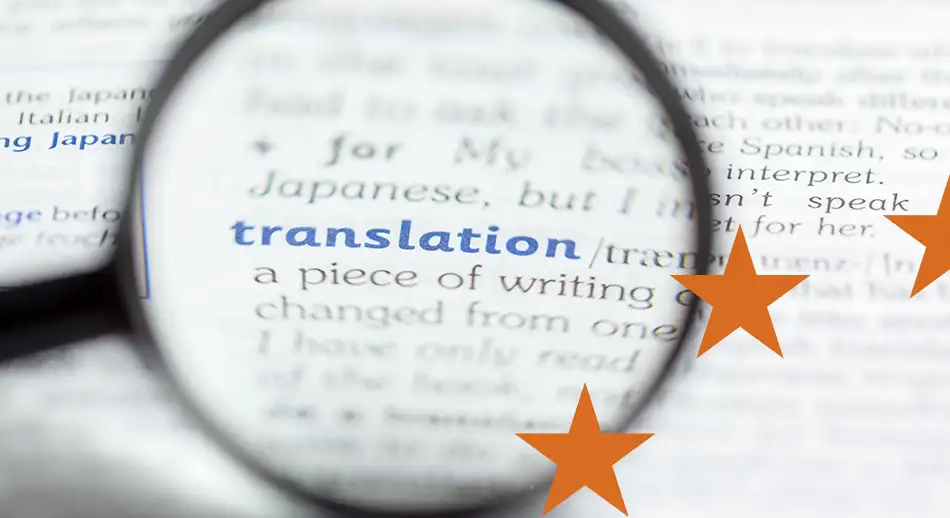An in-depth look at the so-called “cross-cutting aspects” in European design: examples and tips on how to integrate them into your projects
Cross-cutting aspects in European projects: what are they?
If we think of European design as a play, we can imagine the projects as the actors, the program (or call) as the script, and the cross-cutting aspects as the set design. The cross-cutting aspects are in fact the “frame” of the design but, as in the case of a theatrical set design, they are much more than a side element: they are a set of core themes related to EU policy priorities that interact with all aspects of the project, and aim to ensure that every action financed with European funds contributes to common values and challenges.
Cross-cutting aspects are thus the outline, or “setting,” of any project, but they are also a substantial aspect of it. They should be integrated at every stage, from design to project evaluation. They differ from objectives, which pertain to the specific area of intervention and (taking up the metaphor) represent the “plot” of our project.
They are not just “statements of intent,” but meet specific requirements that we find in European programs and calls for proposals.
The main cross-cutting aspects we find in European design are:
- Inclusion and diversity. Projects must be accessible and promote the participation of people with fewer opportunities, combating all forms of discrimination, in terms of gender, census, origin, orientation, and physical condition (to name a few);
- Environmental sustainability and green transition. Projects should be able to integrate as much as possible practices and activities that contribute to reducing impacts on ecosystems and natural resources, protecting the environment and combating climate change;
- Digital transition and innovation. Projects, regardless of their area of focus, should be an opportunity to make the most of the potential of digital technologies, improve participants’ digital skills, and promote digital innovation in methods and outcomes;
- Civic and democratic participation. Projects should promote participation in democratic life, increased knowledge and awareness of the founding values of the EU, and citizen engagement socially and politically.
Cross-cutting aspects in European programs
These cross-cutting aspects are concretely implemented in a similar way within major European programs. Let us analyze some of them.
The Erasmus+ program refers to the four cross-cutting priorities already mentioned: inclusion and diversity, environment and combating climate change, digital transformation, and democratic participation.
The official page dedicated to these priorities presents some interesting examples of projects for each of the priorities in the form of short video interviews. The guide Unlock the power of priorities, published this year, offers practical tips on how to integrate priorities before, during, and after the project, with useful guidance outside of Erasmus+ projects as well. The INAPP guide on inclusion and diversity in mobility proposals is also a useful application tool.
Three key strategic orientations (KSOs) were defined in the Horizon Europe Strategic Plan 2025-2027:
- Green Transition, with a 10 percent cross-sectional share of the budget allocated to biodiversity (additional to the budget already specifically earmarked for climate action);
- Digital transition, with 13 billion earmarked between 2021-2027 for key technologies in the digital sphere;
- A more resilient, competitive, inclusive, and democratic Europe, an orientation that includes research on civil security, an equitable and environmentally friendly economic model, health and well-being, and democratic participation.
KSOs are designed particularly for the program’s second pillar, “Global Challenges and European Industrial Competitiveness,” and in synergy with Horizon Europe’s horizontal pillar “Broadening Participation and Strengthening the European Research Area”(here for an overview of the program’s structure and pillars).
Within the Structural Funds very similar dimensions are-rather than cross-cutting aspects-“taking center stage.” The “Common Provisions Regulation,” which establishes unified rules for the management of Structural Funds, defines 5 strategic objectives or “policy objectives” for the entire programming(Regional Programs, National Programs, and Territorial Cooperation):
- A more competitive and smarter Europe,
- A resilient, greener, low-carbon Europe,
- a more connected Europe, u
- n more social and inclusive Europe and
- A Europe closer to the people.
These aspects are thus both cross-cutting and central in guiding funding. They are also normally mentioned at the level of individual calls, with additional requirements depending on the specific area of action. Each of these cross-cutting dimensions is framed within the framework of European policies, which (as we explain in our handbook) are the basis for programs, calls and project allocation.
We provide below a brief analysis of each of the main cross-cutting dimensions, with a reference to the main European policies to which they relate, and some pointers for how best to integrate them within your own projects.
Inclusion and diversity
This covers social equality, the principle of solidarity, inclusion of people with disabilities, gender equality, respect for minorities and diversity in all its manifestations.
At the core of inclusion is the acceptance of the characteristics that make each person unique, while diversity describes the inherent variety of a society, which is manifested in the recognition of distinctions among individuals by factors such as age, gender, ethnicity, religious belief, disability, sexual orientation, educational level, and nationality.
Integrating this principle into projects is based on the concept of Leave No One Behind, that is, making sure that no one is left behind before, during, and after the project by removing physical, cultural, social, economic, and geographic obstacles to participation as much as possible.
The EU policy and strategy documents underlying this principle are:
- The Treaty on European Union, in particular Article 2;
- The Charter of Fundamental Rights of the European Union, which emphasizes the values of dignity, freedom, equality, solidarity, citizenship, and justice;
- The European Pillar of Social Rights, which includes 20 principles for better and fairer labor market access, just working conditions, social protection and inclusion.
Added to these is the European Convention on Human Rights (ECHR), which was approved in 1950 by the 46 countries that are members of the Council of Europe, including the 27 EU member states, for the protection of human rights and fundamental freedoms in Europe.
Regarding the inclusion of people with disabilities (a topic we discussed in a recent article), a key document is the Disability Rights Strategy 2021-2030, based on the United Nations Convention on the Rights of Persons with Disabilities (UNCRPD). Also important to take into account is the European Accessibility Act, effective June 2025.
In addition, it is useful to refer to the European Commission’s Priorities for 2024-2029, particularly the priority “Supporting people and strengthening our societies and social model” in addition to the actions related to combating discrimination included in the action “Building an Equality Union.”
For in-depth legislative insights, we recommend visiting the EUR-Lex site, an official access point to EU legislation. The “summaries of EU legislation” section provides brief reviews with links to reference documents organized within 32 thematic areas. In the area of inclusion and diversity, we recommend checking out the human rights section, the justice, freedom and security section, and the employment and social policy section.
For updates on concrete actions carried out by the European Commission, another reference source is the website of DG EMPL, the Directorate-General for Employment, Social Affairs and Inclusion, which includes a section devoted to the policies and activities for which the directorate is responsible.
Here are some tips for a more inclusive project:
- Try to ensure equitable representation of differences in the project team and among the recipients;
- Actively inquire about the needs of recipients based on their differences in order to envisage the most appropriate support;
- consider not only the obstacles, but also the contribution that the recipients, precisely because of their diversity, can make to the project.
Gender Equality
This principle is part of the broader principle of inclusion and diversity but, given its increasing weight in European design, we devote more time to it.
Gender equality coincides with the presence of “equal rights, responsibilities and opportunities for women and men, girls and boys”(EIGE). Gender equality fully involves and engages both men and women to ensure equal access in 6 key areas defined by the gender equality index: work, money, knowledge, time, power, health.
Regarding gender equality, the main references at the EU level are:
The Charter of Fundamental Rights of the European Union(art.23);
The Treaty on the Functioning of the European Union (TFEU, Articles 8 and 157);
The EU strategy ” A Union of Equality: the Strategy for Gender Equality 2020-2025,” which sets out five priority areas for action.
We also highlight the Roadmap to Strengthen Women’s Rights, developed within European Commission Priorities 2024-2029, which includes links to additional documents and sources, such as the annual report on gender equality in Europe (available for 2025).
Within European calls for proposals, this translates into requirements such as the submission of a Gender Equality Plan (GEP), among the mandatory requirements of Horizon Europe, and the encouragement of gender mainstreaming. The GEP is a strategic and organized plan with the purpose of promoting and ensuring gender equality within the work environment of companies and public bodies. Gender mainstreaming in projects, on the other hand, means the systematic consideration of differences between women and men at all stages of the project.
The ultimate goal is to promote equality between women and men and combat discrimination, ensuring that everyone benefits equally from the measures taken and that inequalities are not perpetuated.
Three tips for a more gender-equitable project:
- Try to ensure a gender balance in the project team and at different levels of decision-making;
- Include the gender perspective in the context and needs analysis at the design stage;
- include gender-disaggregated data and specific indicators for project monitoring and evaluation.
Digital transition and innovation
The digital transition is a strategy to develop a digital transformation for the benefit of all, with an approach that puts the individual and European values at the center. In the EU’s intentions, the digital transition must be able to put technology at the service of people, lead to an equitable and competitive development of the digital economy, create secure, accessible and inclusive digital spaces, and support actions for greater environmental sustainability.
European policies and official reference documents are:
- the Compass for Digital 2030, which sets out strategic goals for the digital decade;
- the European Declaration on Digital Rights and Principles for the Digital Decade, which promotes a digital transition that puts people at the center and is based on EU values (we discussed it here);
- At the legislative level we highlight, for its innovative aspects, the Artificial Intelligence Regulation (AI Act), the first law in the world to establish harmonized standards on AI, based on a risk-oriented approach (unacceptable, high, limited, minimal risk).
On the EUR-Lex website, a number of links to reference documents, including the Digital Europe 2021-2027 program, can be accessed via the research and innovation policy subsection.
From the perspective of policy action, digital and innovation is one of the most cross-cutting dimensions, but for specific insights the bodies most involved are DG Connect and the executive agency HADEA. The DG Connect website provides an overview of policies in the area of the digital society, advanced digital technologies (including artificial intelligence), international cooperation in the digital field, and the digital economy.
Three tips for a project that contributes to the digital transition:
- at the design stage try to include the digital aspect of activities from the beginning, rather than integrating digital components later to meet the requirements of the call;
- include monitoring indicators that address the digital component from both the activity and project management perspectives;
- integrate digital measurement of sustainability by attempting to quantify the decrease in a project’s environmental impact through the adoption of digital solutions (e.g., energy/emissions reduction), demonstrating how the digital transition is a catalyst for the green transition.
Environmental sustainability and green transition
Environmental sustainability is the principle that ensures long-term ecological balance by meeting current needs without compromising future generations. It is embodied in six key objectives: climate change mitigation and adaptation, sustainable use of resources, circular economy, pollution control, and biodiversity protection. The Green Transition, on the other hand, is the EU’s policy strategy that defines the roadmap for implementing this change, a process that involves deep and widespread transformation at the economic, political, social and cultural levels.
Relevant European policies include:
- The European Green Deal and the related communication from the European Commission;
- European Climate Act, which enshrines the goal of reducing net greenhouse gas emissions by at least 55 percent by 2030 compared to 1990 levels, accompanied by the “Fit for55” package of legislative acts for its implementation;
- EU Taxonomy Regulation, a more technical document, but one that provides the most operational definition of what constitutes an environmentally sustainable economic activity.
The importance of this principle also emerges from the new Multiannual Financial Framework 2028-2034 (the European Commission’s new budget proposal discussed here), which calls for spending at least 35 percent of resources to advance the goals set in the Green Deal.
Within the European Commission’s priorities 2024-2029, the page dedicated to the priority “Maintaining the quality of life: food security, water and nature” contains useful insights, as well as a timeline of progress at the level of policies, legislative actions and initiatives. In addition, a summary of European legislation related to environment and climate change is available on the EUR-Lex website, with links to reference documents.
These are complemented by a number of policy documents with more specific focuses such as the EU Biodiversity Strategy 2030 and the Nature Restoration Regulation, or, in the agri-food sphere, the Farm to Fork strategy (which we discussed recently in this article dedicated to the “Food for europe” podcast).
Aspects related to climate and environmental sustainability are specifically addressed by the Directorate General for Climate Action, DG CLIMA, with regard to combating climate change, with elements shared with other directorates such as DG AGRI, responsible for the agricultural sector, and DG ENER, responsible for the energy sector. A selection of links to policies, initiatives, and thematic insights are available on the homepages of the directorates’ websites.
There are numerous requirements in the notices related to environmental sustainability, in some cases very conditional, such as enhanced cross-compliance , a system of mandatory rules that requires compliance with Mandatory Management Criteria (SMRs) and standards for maintaining land in Good Agricultural and Environmental Condition (GAEC) for farmers receiving Common Agricultural Policy funds (we devote ample space in the guide to CAP and rural funds).
Three tips for a European project to contribute to the green transition and environmental sustainability:
- include actions, even small ones, that will help reduce your project’s carbon footprint, such as by using less environmentally impactful means of transportation, setting anti-waste standards, reducing plastic, etc;
- consider include specific monitoring indicators to measure the level of environmental sustainability of the project;
- develops actions that can also promote virtuous behavior on the part of project recipients, such as providing an adequate budget for travel with a smaller CO2 footprint.
Civic and democratic participation
The key word in this cross-cutting aspect is participation, understood as the opportunity for people to express themselves and contribute to decisions that impact their lives. This principle concerns the possibility of taking part in democratic life at all levels, local, national and European, through meaningful opportunities where participants can express their views, helping to develop a greater sense of belonging to the European community. As a cross-cutting aspect, it also concerns a project’s ability to promote critical thinking, media literacy, civic and intercultural skills, and understanding of shared EU values. In this framework, youth participation is a key aspect, a topic we also discussed with our technical partner Europiamo in this article.
Key references from a legislative and European policy perspective include:
- The Treaty on European Union, particularly the articles in Title II – Provisions on Democratic Principles (Art.10, 11 and 12);
- The Charter of Fundamental Rights of the European Union, particularly Title V dedicated to citizenship establishes the civil and political rights essential for participation;
- Recommendation (EU) 2023/2836 on promoting the effective involvement and participation of citizens and civil society organizations in public policy-making processes;
- The European Union Youth Strategy 2019-2027 dedicated to youth engagement.
This issue is at the heart of the European Commission’s strategic agenda, with one of the priorities for 2024-2029 focusing on the protection of democracy and European values. On the page dedicated to this priority, it is possible not only to access an overview of the different areas in which this priority is reflected (from freedom of the press to media literacy via measures such as enhanced conditionality), but also to access useful insights such as the 2025 Report on the Rule of Law in the European Union.
Finally, on the EUR-Lex website, in the Justice, Freedom and Security section, a review of links to reference documents can be accessed, particularly in the subsection “Citizenship of the Union.”
Three tips for a European project that contributes to civic and democratic participation:
- Provide opportunities for project recipients to contribute directly to activities, such as through co-design or civic monitoring actions (we discussed this here);
- In communicating about the project, include if possible activities to give back to the citizenry, public discussion events and accessible dissemination materials;
- Ensure that the project is structured to provide the necessary information and a safe space for recipients to share and express their views .
Cross-cutting aspects: the real key to impact?
We have seen what cross-cutting aspects are, where they come from from the perspective of European values and policies, how they can be integrated into projects, and how they translate into specific priorities and requirements in European programs.
Cross-cutting aspects are not mere bureaucratic requirements, but real catalysts for impact: when properly integrated, they not only increase the chances of funding, but also enhance the transformative potential of the individual project, strengthening the alignment between policies, programming and European projects.
We will return to the elements of this “setting” in the coming months, with insights, tools and experiences on individual cross-cutting aspects.




